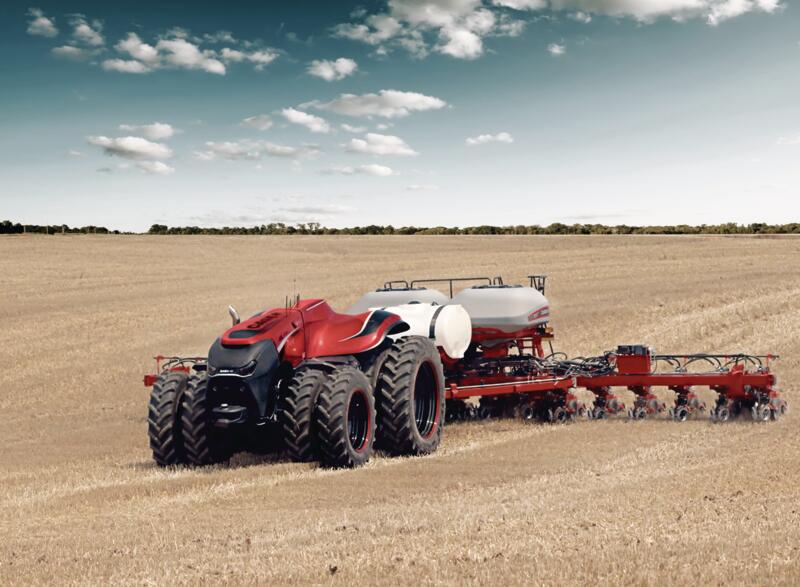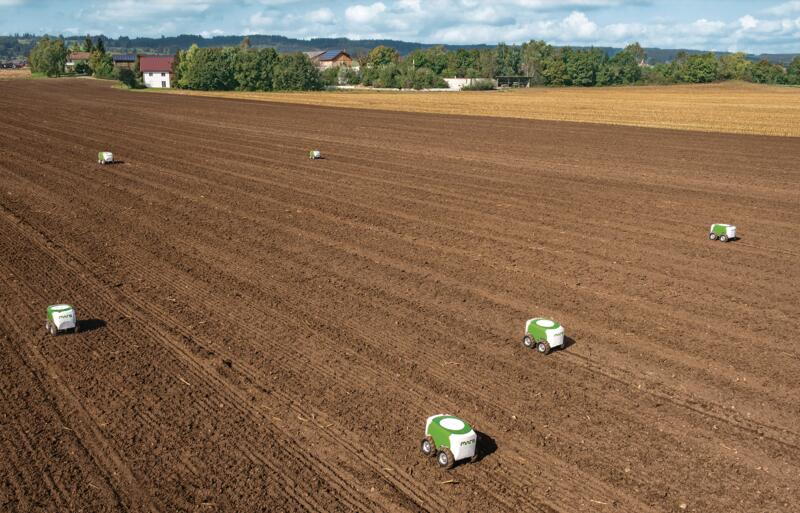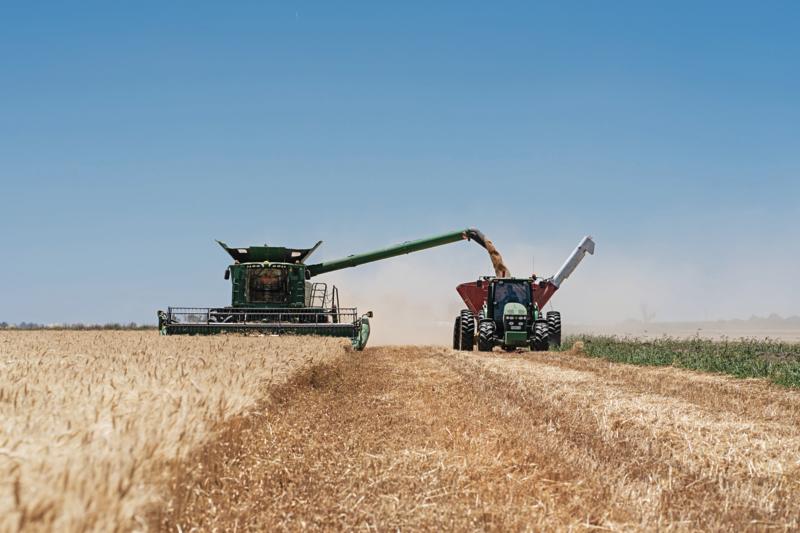THREE years ago, major manufacturers gave agriculture a glimpse of their idea of the future with different concepts of autonomous tractors and machinery.
At major agriculture shows around the world in 2016, CNH Industrial (CNHi) displayed two concept machines to show what driverless tractors might look like. The company, which produces
Case IH and
New Holland machines, delivered the Autonomous Concept Vehicle (Case IH) and the NH Drive (New Holland) based on the same technology. The idea is to set them off in a paddock to carry out tasks, working within parameters set for them via a laptop or a tablet.
The aim of autonomous machinery is to remove human labour from repetitive tasks that require long hours in the driver’s seat. It’s a productivity utopia where tasks could be carried out around the clock with sophisticated monitoring systems removing guesswork and enabling machines to make their own decisions.
 Case IH’s autonomous concept vehicle was launched at agricultural shows in 2016, but is yet to hit the market. Source: Supplied.
Case IH’s autonomous concept vehicle was launched at agricultural shows in 2016, but is yet to hit the market. Source: Supplied.
Since CNHi wowed crowds with its concept machines things have gone a little quiet, and currently there are few practical applications where robots have proven a cost benefit for Australian farmers.
QLD company leading the way with farm robotics
One of the most promising is
SwarmFarm Robotics in Queensland, which has made significant breakthroughs in a radically different concept for robotic machines. While CNHi focused on taking the driver out of existing high-horsepower tractors, SwarmFarm’s idea was to create a platoon of small machines that would scurry around the paddock like worker bees.
Fendt, regarded as the global tractor technology leader, began working on a similar concept – Mobile Agricultural Robot Swarms (MARS) in 2014, but SwarmFarm seems to be leading the charge.
 Fendt trials its Mobile Agricultural Robot Swarms (MARS). Source: Supplied.
Fendt trials its Mobile Agricultural Robot Swarms (MARS). Source: Supplied.
Broadacre farmers Andrew and Jocie Bate are behind the concept which has attracted former Queensland premier Campbell Newman, Westpac, Telstra, Elders and international technology giant Bosch. They have also enlisted brainpower from two universities to drive the project along and after eight years are boasting 9,000 hours of robot fieldwork on their own property.
The SwarmFarm robots are simple machines with little more than an articulated frame, wheels, engine and whatever payload the farmer chooses. Prototypes on the Bate farm have been used for spraying, returning to base automatically to refuel and refill the spray tank.
SwarmFarm robots can be used for a variety of autonomical farm jobs. Source: Andrew Bate- YouTube.
The one machine that has been delivered to a customer so far is being used to mow turf and a further 20 machines are set to go out later this year. It’s believed to be the first real commercial sale of robotic agriculture machinery, but the timing might not be great with much of the potential customer base in the grip of drought.
In Australia, the “next tsunami” in farm machinery, as Case IH’s former marketing manager Pete McCann once predicted it would be, might have to wait. Pete, now Case IH brand leader for Australia and New Zealand, told a conference that auto-steer was the last shake-up in the industry. “So the next part of it is to get the guy or the girl out of the cab and do the whole lot.”
RELATED ARTICLES ON FARM MACHINERY:
-
Hot headers: how to reduce fire risk
-
Hydrogen-fuelled tractors: a clean energy option
-
Can digital agriculture bring big rewards?
-
Top investment trends in farm machinery
Red tape holding back farm robotics hitting the market
The trouble is the red tape that goes along with making that a legal and commercial reality. Outside of agriculture, car manufacturers have also invested considerable research money into driverless cars with prototypes already tested in the real world, where the consequences of a sensor not recognising a red light or pedestrian are dire. So the well-funded research in cars is setting the standard for other forms of automated machines.
The word around the tractor industry at a global level is they’re happy to wait for the car mob to set the pathway. But while we wait for a fully realised autonomous robot dream, we are seeing signs of what’s to come in the machines available now.
Most gains have been seen on combine harvesters where time is critical as farmers often work around the clock to get their crop off paddocks. A combine operator needs to be vigilant over the full range of the machine’s functions, including the height of the front, the speed of the machine, the threshing and separation process and the quality of the grain as it goes into the tank.
 Harvest is the busiest time in a farmer’s year, and an autonomous combine would be a more efficient and safer option for farmers. Photo by: Matt Beaver.
Harvest is the busiest time in a farmer’s year, and an autonomous combine would be a more efficient and safer option for farmers. Photo by: Matt Beaver.
Case IH’s product specialist for hay and harvest machines in Australia and New Zealand, Andrew Wood, says fatigue is an issue they are working to solve. “Harvest windows are narrow, conditions change and machines work long hours,” he says.
“So the more operators have to monitor in the cab, the more fatigue they suffer, and when you’ve got a 40 or 45-feet-wide front, trees and fenceposts can be missed and that translates into expensive damage.”
The solution is to automate as many operator functions as possible and Case IH has been showcasing its new automated features in its 250 Series combine. It has 16 sensors around the machine to fully automate seven of the combine’s functions even as harvest conditions, such as crop density or weather, change.
Most of the automation is in the threshing process to maximise yield. “The operator would have to monitor throughput and adjust during the course of the day as conditions change,” Andrew says.
“If you make a mistake, you might be putting grain on the ground and that is yield loss and it can germinate, meaning you have to alter the spray regime. Automation takes that responsibility away from the operator which means as more hours are spent in the machine and fatigue sets in, it ensures a more consistent yield."
“If you don’t have to watch the screen so much because the automated system is doing a lot for you, you can see more of what’s happening in front which reduces the risk of damage.” – Andrew Wood
Other brands such as
Claas and
John Deere have also gone down this path, so there are different options to explore. The cost of this level of automation also adds a fair bit to the bottom line of a sales contract and Andrew admits it would be early adopters who are prepared to invest in future technology who will be the first customers.
In the meantime, SwarmFarm’s Andrew Bate says the companies first commercially sold robot is working on a turf farm, mowing turf. Earlier this year he told Sheep Central another three were being built – one to mow and spray between rows on a macadamia farm, and two to work with weed detection technology and spot-spraying weeds for grain growers.
“We’ve got 20 sold now to deliver so we are doing two a month from here on in – we want to speed that up to more robots, going forward,” Andrew said.